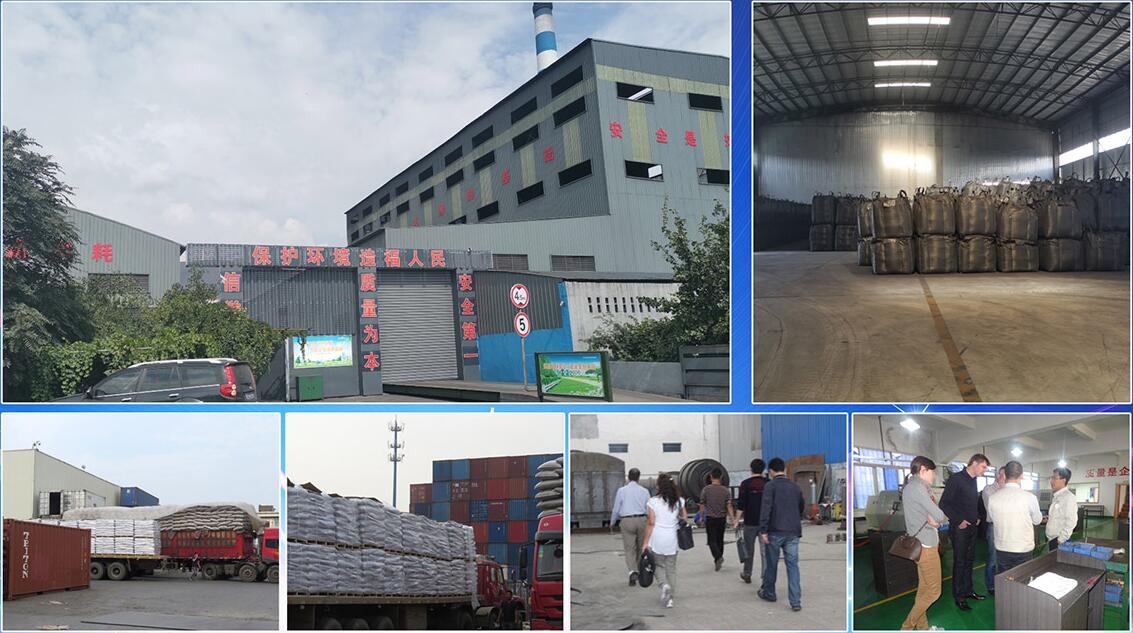Types and Applications of Activated Carbon
Activated carbon is a very useful adsorbent. Due to their high surface area, pore structure, and high degree of surface reactivity, activated carbon can be used to purify, dechlorinate, deodorize and decolorize both liquid and vapor applications.
Activated carbon is a very useful adsorbent. Due to their high surface area, pore structure, and high degree of surface reactivity, activated carbon can be used to purify, dechlorinate, deodorize and decolorize both liquid and vapor applications. Moreover, activated carbons are economical adsorbents for many industries such as water purification, food grade products, cosmetology, automotive applications, industrial gas purification, petroleum and precious metal recovery mainly for gold. The base materials for activated carbons are coconut shell, coal or wood.

TYPES OF ACTIVATED CARBON
Zinc Kettle
The very large internal surface areas characterized by microporosity along with high hardness and low dust make these coconut shell carbons particularly attractive for water and critical air applications as well as point-of-use water filters and respirators
- Very high surface area characterized by a large proportion of micropores
- High hardness with low dust generation
- Excellent purity, with most products exhibiting no more than 3-5% ash content.
- Renewable and green raw material.
Coal-based activated carbon
Demand is typically high for this relatively low cost filter media for both gas and liquid applications. Coal based activated carbon has a high surface area characterized by both mesopores and micropores.
- Consistent density
- Hard materials with minimal dust generation.
- Economical
Wood based activated carbon
It produces different performance characteristics in industrial applications typically catered to with coal or coconut products.
Wood based activated carbon has a high surface area characterized by both mesopores and micropores and has excellent decolorizing properties owing to its signature porosimetry
- Relatively low density
- Renewable source of raw material
Catalytic based activated carbon
Catalytic carbon is a class of activated carbon used to remove chloramines and hydrogen sulfide from drinking water.
It has all the adsorptive characteristics of conventional activated carbons, as well as the ability to promote chemical reactions.
Catalytic carbon is not impregnated with caustic chemicals
Because catalytic carbons have no impregnates, you won't have to worry about reduced organic odor capacity or the higher bed fire potential of the impregnated carbons.
Catalytic carbon is created by altering the surface structure of activated carbon. It is modified by gas processing at high temperatures to change the electronic structure and create the highest level of catalytic activity on carbon for reducing chloramine and H2S in water. This added catalytic functionality is much greater than that found in traditional activated carbons. Catalytic carbon is an economical solution to treat H2S levels as high as 20 to 30 ppm. Catalytic carbon converts adsorbed H2S into sulfuric acid and sulfurous acid which are water soluble, so carbon systems can be regenerated with water washing to restore H2S capacity for less frequent physical change-outs.
Impregnated Activated Carbon
Surface impregnation chemically modifies activated carbon through a fine distribution of chemicals and metal particles on the internal surfaces of its pores. This greatly enhances the carbon’s adsorptive capacity through a synergism between the chemicals and the carbon. And provides a cost-effective way to remove impurities from gas streams which would otherwise not be possible.
Water treatment
Because of its antimicrobial/antiseptic properties, silver-impregnated carbon is an effective adsorbent for purification in earth-bound domestic and other water systems.
Gas purification
Impregnated activated carbon is used to treat flue gases in coal-fired generation plants and other air pollution control applications. Carbon can be specifically impregnated for removal of acid gases, ammonia and amines, aldehydes, radio-active iodine, mercury and inorganic gases such as arsine and phosphine. Carbon impregnated with metal-oxide targets inorganic gases including HCN, H2S, phosphine and arsine.
APPLICATION OF ACTIVATED CARBON
Different types of activated carbon are suited for various specialized applications.
- Granulated activated carbon
- Pelletized activated carbon
- Powdered activated carbon
- Impregnated activated carbon
- Catalytic activated carbon
Each grade and size of activated carbon is application specific. Selecting the correct activated carbon product and mesh size depends on the application and contaminants you plan to remove.
Typical applications are:
- Removal of volatile organic compounds such as Benzene, TCE, and PCE.
- Hydrogen Sulfide (HS) and removal of waste gases
- Impregnated activated carbon used as a bacteria inhibitor in drinking water filters
- Removal of taste and odor causing compounds such as MIB and geosmin
- Recovery of gold
- Removal of chlorine and chloramine
Designing a proper activated carbon filtration system with enough contact time, pressure drop, and vessel size is important. Also, activated carbon’s physical and chemical characteristics play an important role in removing contaminants effectively. Therefore, material testing is essential and ASTM test methods such as butane activity, surface area, density, and water content (moisture) can be carried out to find the best suitable material for your application.